Zurich (1937 - 1994)
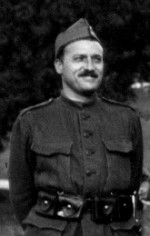
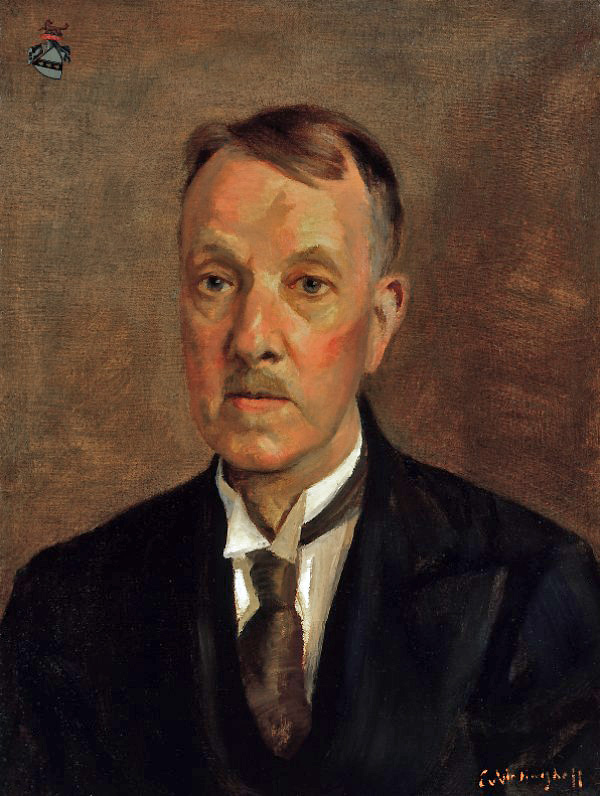 In 1937, Egon von Vietinghoff returned to Europe without his familiy, through life threatening storms, on board of a Belgian freighter. He went to his father's home in Switzerland, in Zollikon, and rented a studio in Zurich. In order to save money, he walked each day many miles to his studio and back. He financially started from scratch and was forced to sell one painting in his last frame, thus being able to buy two frames.
In 1937, Egon von Vietinghoff returned to Europe without his familiy, through life threatening storms, on board of a Belgian freighter. He went to his father's home in Switzerland, in Zollikon, and rented a studio in Zurich. In order to save money, he walked each day many miles to his studio and back. He financially started from scratch and was forced to sell one painting in his last frame, thus being able to buy two frames. On December 1937, he was conscripted by the Army: height 5' 10½", weight 176 lbs., and assigned to auxiliary local service. During World War II, he did an average of 49 days per year of military service in the Swiss army, mainly as a sentry in barracks or at the military airfield of Duebendorf, near Zurich.
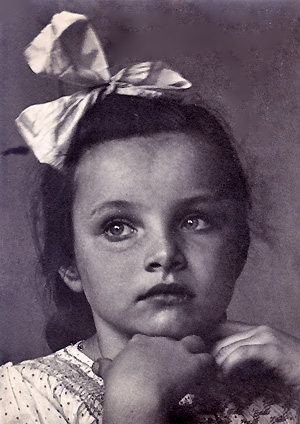 Emotionally, this period was very trying for him. In 1938, his wife and child joined him from South America; they lived together again in the old town of Zurich. They visiting his relatives in Saxony and Silesia, Germany. But soon he moved back to Zollikon and his wife and child back to Argentina.
Emotionally, this period was very trying for him. In 1938, his wife and child joined him from South America; they lived together again in the old town of Zurich. They visiting his relatives in Saxony and Silesia, Germany. But soon he moved back to Zollikon and his wife and child back to Argentina. The marriage with Marcella consisted of alternating separations and magnetic attraction until it finally ended. The loss of his daughter Jeanne was extremely painful.
He had to take legal responsibility for his father who lived removed from reality and for his brother who died after a long and serious illness in 1942.
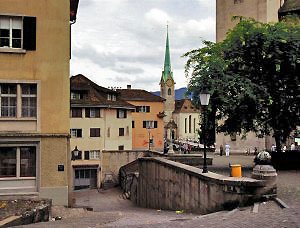 In addition, the war stopped promising offers of exhibitions from respected German galleries; from the north of Switzerland he saw the glare of fires from the bombed city of Munich in the night sky and he remembered his relatives; he talked to his cousin through a barbed wire fence on the German-Swiss border in Constance but was unable to provide any practical help.
In addition, the war stopped promising offers of exhibitions from respected German galleries; from the north of Switzerland he saw the glare of fires from the bombed city of Munich in the night sky and he remembered his relatives; he talked to his cousin through a barbed wire fence on the German-Swiss border in Constance but was unable to provide any practical help. Also his paintings were refused by the Swiss National Exhibition, the exhibition of the Swiss Association of visual artists and the Museum of Art in Winterthur. His admission to the Association of Swiss Painters, Sculptors and Architects was rejected as well.
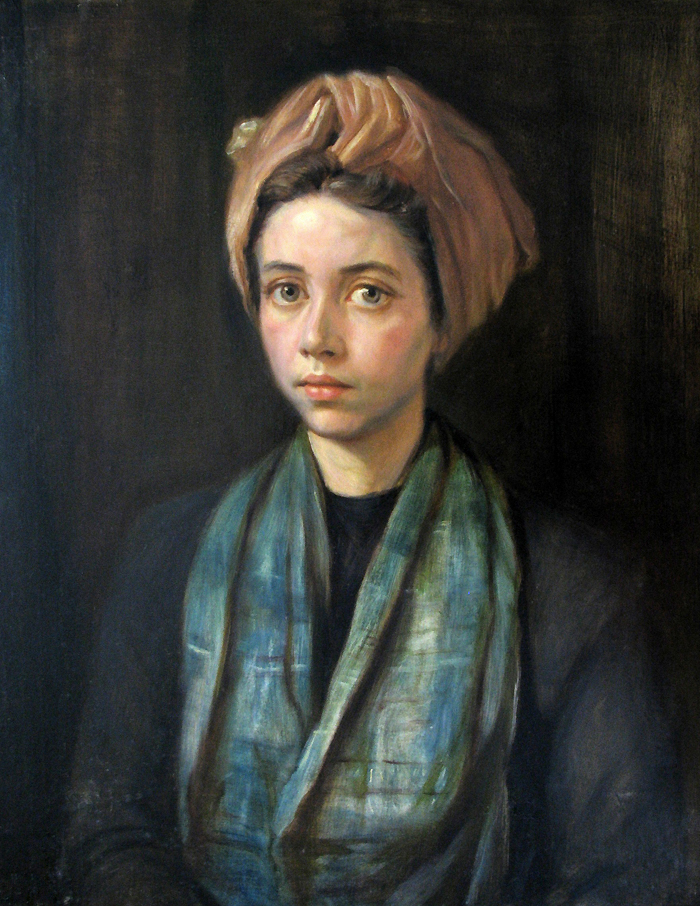 Egon moved from Kirchgasse to Spiegelgasse, within the old town of Zurich, but did not remain alone for long.
Egon moved from Kirchgasse to Spiegelgasse, within the old town of Zurich, but did not remain alone for long. He married again to the Swiss Heidi Howald from the Canton of Berne, who worked as a photographer, earned her livelihood with various bread-winning jobs and helped him to keep his artist's household in shape.
Yet, this relation also lasted only a couple of years.
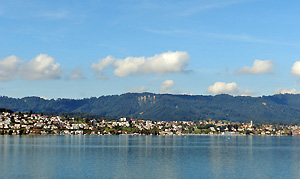 In 1944, there was a turn of the tide, and Vietinghoff finally settled down. He moved to Zurich-Wollishofen on the other side of the lake, to the cooperative housing estate Neubuehl. At first, he took only a studio and lived there in the middle of his paintings. Here, on Ostbuehlstrasse 17, he worked until 1989. Ninety percent of his oeuvre was created in this studio, except the landscapes. The housing estate built by the "Werkbund" was a committed project of the thirties which would be known as one of the first modern housing estates in Switzerland and is still unique in its style. In the meantime it is classified as a historical monument.
In 1944, there was a turn of the tide, and Vietinghoff finally settled down. He moved to Zurich-Wollishofen on the other side of the lake, to the cooperative housing estate Neubuehl. At first, he took only a studio and lived there in the middle of his paintings. Here, on Ostbuehlstrasse 17, he worked until 1989. Ninety percent of his oeuvre was created in this studio, except the landscapes. The housing estate built by the "Werkbund" was a committed project of the thirties which would be known as one of the first modern housing estates in Switzerland and is still unique in its style. In the meantime it is classified as a historical monument. 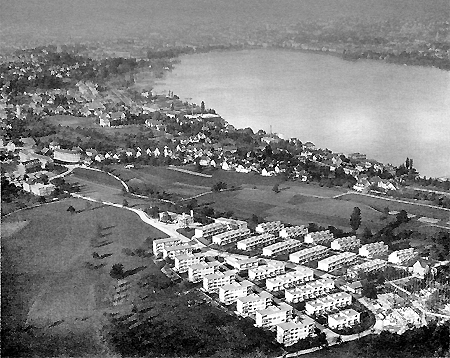 The white rows of buildings in the style of the Bauhaus (covered by flat roofs) are built along the hillside marking the green outskirts of the town. The emphatically functional flats are very practical for tenants. The avant-garde architecture, a series of studios, the living comfort and the quiet surroundings attracted actors, stage-managers, writers, architects, musicians, painters and sculptors – many of them having emigrated from Germany and Austria to Switzerland. Arthur Koestler, Ernst Ginsberg, Leopold Lindtberg, Kurt Guggenheim, Julius Zerfass, Hannes Meyer, Trudi Schoop, and Hans Albert Einstein (the son of Albert Einstein) lived there.
The white rows of buildings in the style of the Bauhaus (covered by flat roofs) are built along the hillside marking the green outskirts of the town. The emphatically functional flats are very practical for tenants. The avant-garde architecture, a series of studios, the living comfort and the quiet surroundings attracted actors, stage-managers, writers, architects, musicians, painters and sculptors – many of them having emigrated from Germany and Austria to Switzerland. Arthur Koestler, Ernst Ginsberg, Leopold Lindtberg, Kurt Guggenheim, Julius Zerfass, Hannes Meyer, Trudi Schoop, and Hans Albert Einstein (the son of Albert Einstein) lived there. 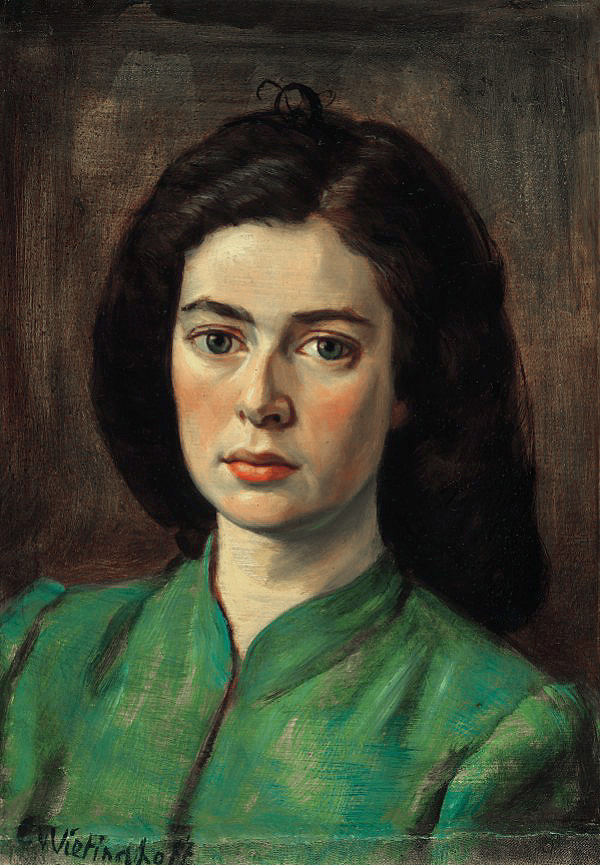 Although the end of the war was an ambivalent experience for Egon von Vietinghoff, the Swiss citizen half descending from German ancestors, for the European and strict pacifist is was the end of an indescribable nightmare.
Although the end of the war was an ambivalent experience for Egon von Vietinghoff, the Swiss citizen half descending from German ancestors, for the European and strict pacifist is was the end of an indescribable nightmare.In a relative's house he met the eighteen year old German Maria Juliane (Maritta) Foerster, who was trying to recover in Switzerland from her flight from Silesia (refugee trek in early 1945 from the East to the West when the Soviet Army approached) and the hunger period in the war-stricken British occupation zone of Germany.
Maritta, whose mother was also born a Vietinghoff, became his third wife. Divorce from his second wife was a mere formality; a subsequent love affair had perhaps separated them.
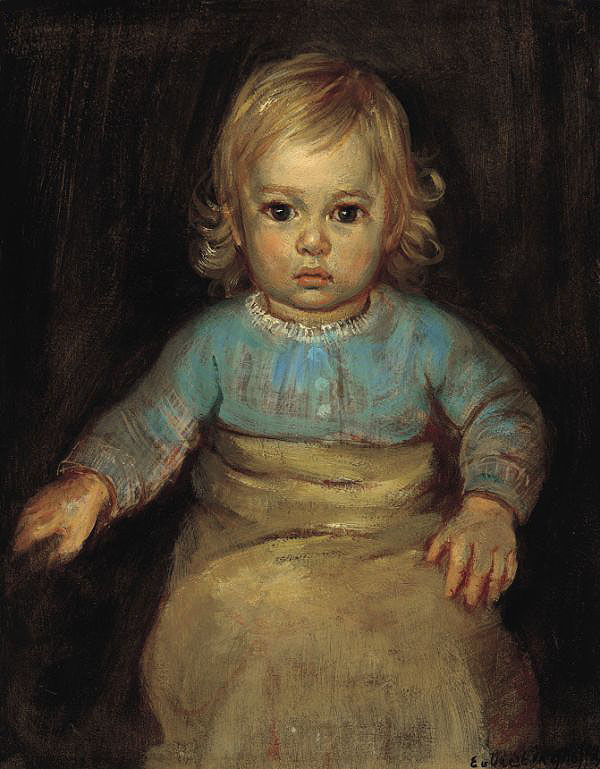
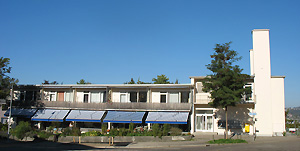 In 1948, they moved to an apartment in the housing estate Neubuehl, just a minute on foot from his studio. But the marriage with the mother of his son Alexander, who was 26 years his junior, was as passionate as it was shortlived, contributed to her marital problems with a domineering partner focused single-mindedly much on his artistic progress. The divorce-suit was terrible. Nevertheless, he received custody of their son.
In 1948, they moved to an apartment in the housing estate Neubuehl, just a minute on foot from his studio. But the marriage with the mother of his son Alexander, who was 26 years his junior, was as passionate as it was shortlived, contributed to her marital problems with a domineering partner focused single-mindedly much on his artistic progress. The divorce-suit was terrible. Nevertheless, he received custody of their son. 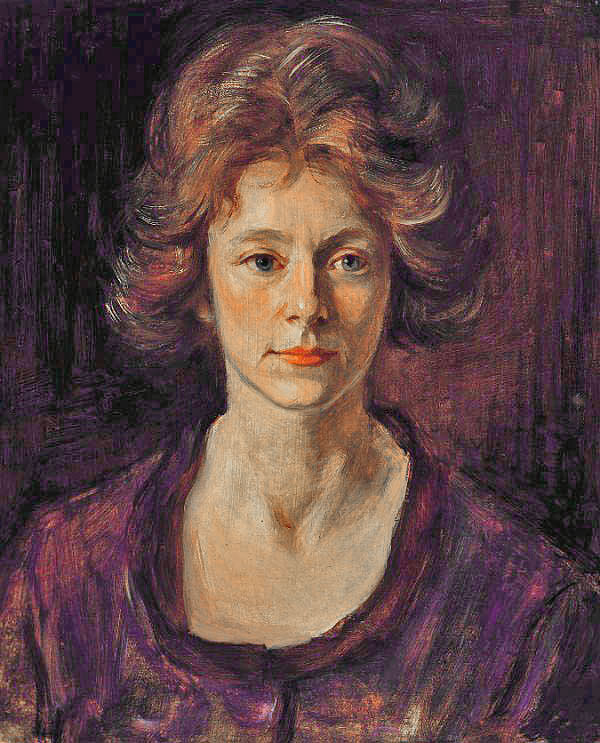 In 1952, his daughter Jeanne came from Argentina for three years. That same year, Egon met the Austrian Liane Charlotte Lenhoff (Lilo) from Salzburg, and his eventful life presented him with yet another marriage (1954). During this year, he experienced an all encompassing new beginning reflected in his work stylistically and quantitatively – as well as sales-wise!
In 1952, his daughter Jeanne came from Argentina for three years. That same year, Egon met the Austrian Liane Charlotte Lenhoff (Lilo) from Salzburg, and his eventful life presented him with yet another marriage (1954). During this year, he experienced an all encompassing new beginning reflected in his work stylistically and quantitatively – as well as sales-wise! In 1953, they moved for the last time, within the same housing estate, to Westbuehlstrasse 40. They would stay here together, another 41 years until his death.
Liane was an active partner, who loved to walk in the mountains, to bind some of his favorite books in leather (Kant, Schopenhauer, Goethe, Grimmelshausen, Bjørnson, Lagerlöf, Balzac, Tolstoy, Gogol, Tagore, Hebel, and those of his mother Jeanne de Vietinghoff), weaved fabrics and shawls, typed his manuscripts, took pleasure in travelling with him and gave him decisive supports in the sale of his paintings.
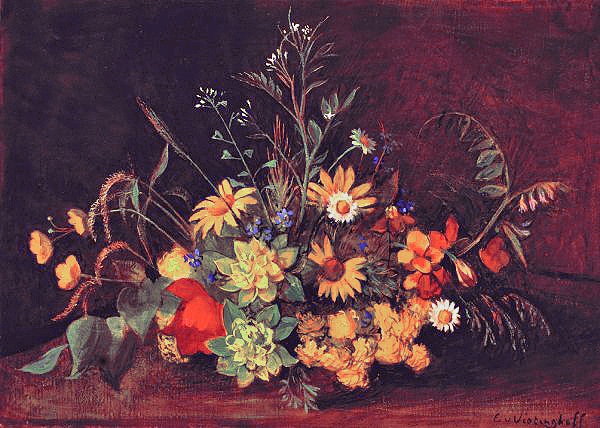 From her excursions and visits to her garden, she brought him wild fruit and flowers serving as models for his still lifes and flower pictures.
From her excursions and visits to her garden, she brought him wild fruit and flowers serving as models for his still lifes and flower pictures. He needed the immediate perception for every picture – except for his figure paintings which were created from imagination.
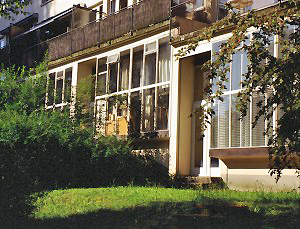 After the adventurous years of his youth, the grievous human and material losses due to deaths, divorces, and after-effects of the war led him to quiet down.
After the adventurous years of his youth, the grievous human and material losses due to deaths, divorces, and after-effects of the war led him to quiet down. After the new beginning with Liane his daily life became more stable.
The orderly family life during his son's school years provided him with the basis and framework he needed in order to fully concentrate on his oeuvre.
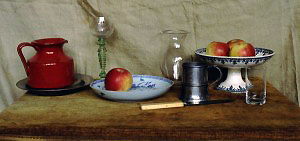 Working with equal intensity and discipline, he spent his days in the studio with canvases, in the middle of pigment pots, pieces of velvet fabric used as backgrounds of his motives, frames and bottles, bowls, jugs, and plates appearing again and again in his paintings.
Working with equal intensity and discipline, he spent his days in the studio with canvases, in the middle of pigment pots, pieces of velvet fabric used as backgrounds of his motives, frames and bottles, bowls, jugs, and plates appearing again and again in his paintings. 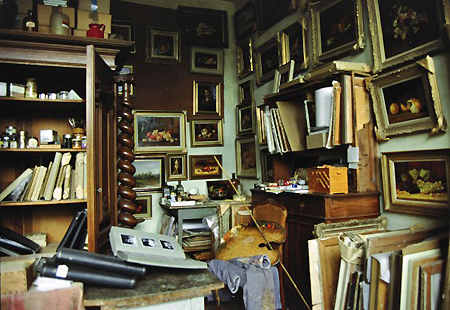 In spite of his newly settled lifestyle, he still loved to travel – in the beginning by train, by bicycle or by motor scooter, and after 1959 by car within Switzerland as well as to France, Belgium, the Netherlands, and Portugal, looking for cathedrals, castles and town halls as well as for the joys of wine and the menu card or tracking baroque buildings in Austria and southern Germany. He was especially attracted by the legendary sites of European culture and the impressive places remembered from his youth.
In spite of his newly settled lifestyle, he still loved to travel – in the beginning by train, by bicycle or by motor scooter, and after 1959 by car within Switzerland as well as to France, Belgium, the Netherlands, and Portugal, looking for cathedrals, castles and town halls as well as for the joys of wine and the menu card or tracking baroque buildings in Austria and southern Germany. He was especially attracted by the legendary sites of European culture and the impressive places remembered from his youth. 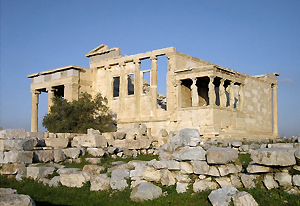 In Greece, southern Italy and Turkey, he admired the temples and statues dating from antiquity as special highlights of mankind. Ever since the days he first encountered it in Morocco, a country he visited once more after 60 years, he had a continuing fascination with the Arabic world. In memory of his wandering years, he returned three times to Spain. For a long time, he traveled to Italy almost every year; his love of art and his enthusiasm drew him to Roman churches with their wealth of frescoes and to the wide places which corresponded so well to his generous nature.
In Greece, southern Italy and Turkey, he admired the temples and statues dating from antiquity as special highlights of mankind. Ever since the days he first encountered it in Morocco, a country he visited once more after 60 years, he had a continuing fascination with the Arabic world. In memory of his wandering years, he returned three times to Spain. For a long time, he traveled to Italy almost every year; his love of art and his enthusiasm drew him to Roman churches with their wealth of frescoes and to the wide places which corresponded so well to his generous nature. 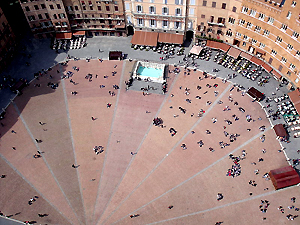 He saw the beauty of landscapes with the eye of the visual artist. He never missed an opportunity to see anew the works of his beloved Old Masters in museums, be it in Winterthur or Vaduz, in Kassel, Berlin, Munich or Vienna, in Antwerp or Amsterdam, in Florence or Rome, in London or Madrid – and he came back innumerable times to the Louvre Museum in Paris.
He saw the beauty of landscapes with the eye of the visual artist. He never missed an opportunity to see anew the works of his beloved Old Masters in museums, be it in Winterthur or Vaduz, in Kassel, Berlin, Munich or Vienna, in Antwerp or Amsterdam, in Florence or Rome, in London or Madrid – and he came back innumerable times to the Louvre Museum in Paris.His hunger for visual impressions was neither appeased in the hours of leisure – in a movie or in coffee houses where he loved to sit and watch people. When he did not watch or observe, he read world literature in German or French (some in Italian as well), devoted himself to his extensive stamp collection, planed new travel itineraries, played chess with neighbors or invented jokes and puns...